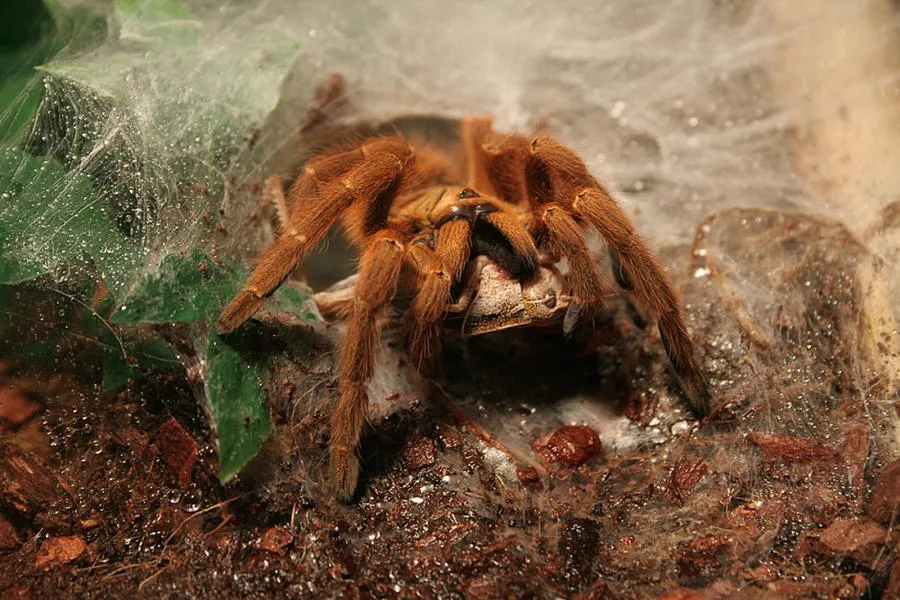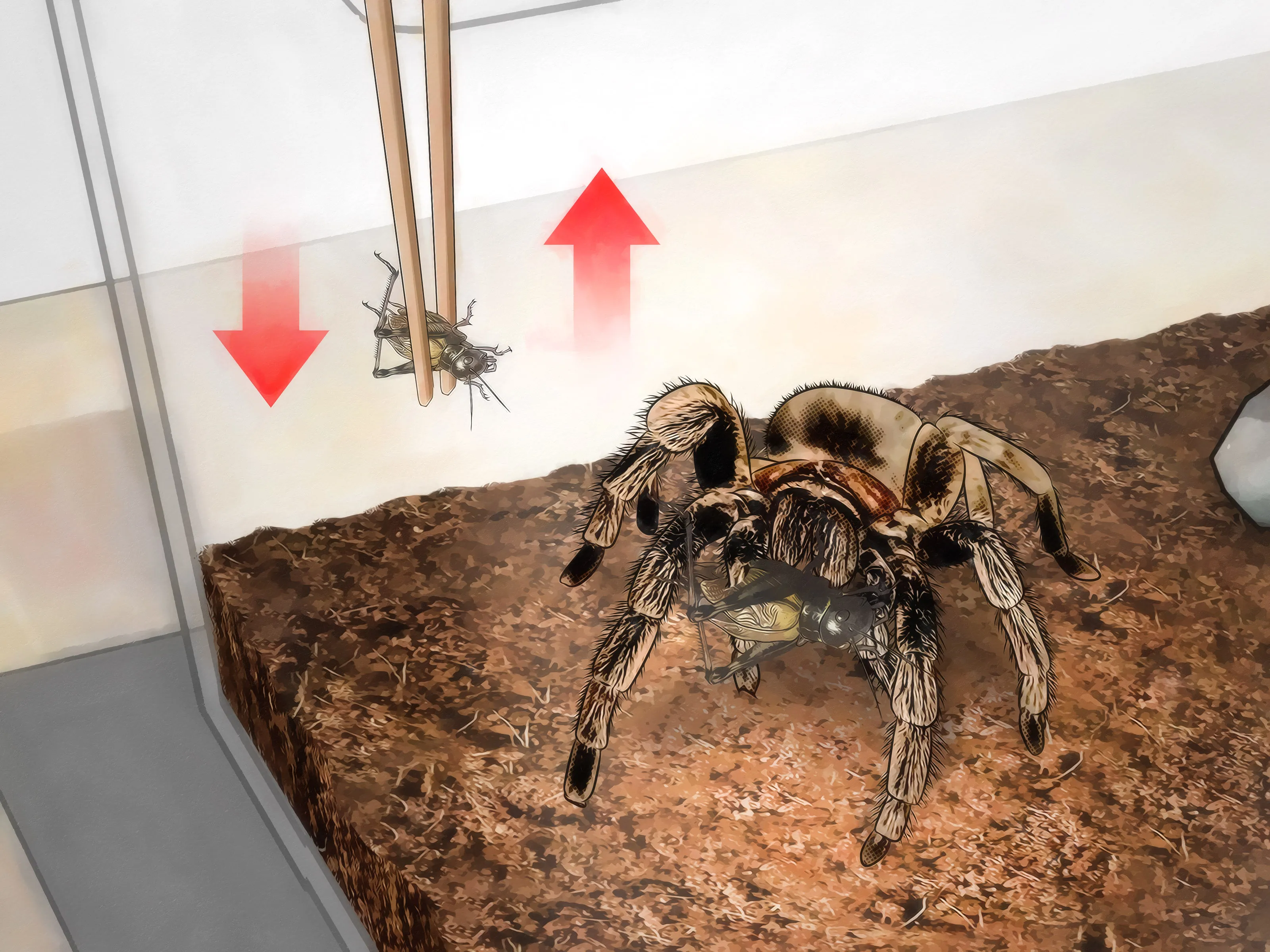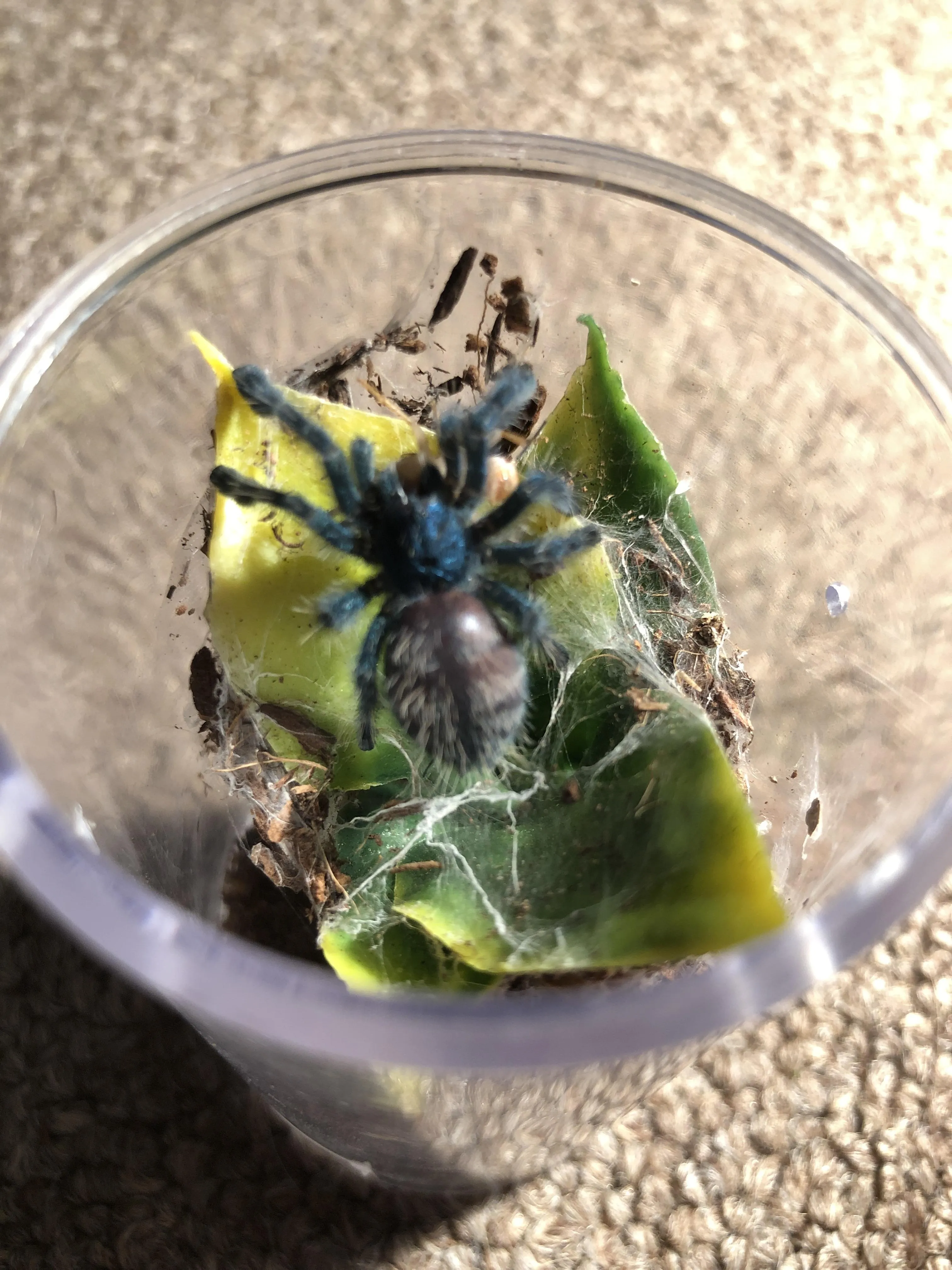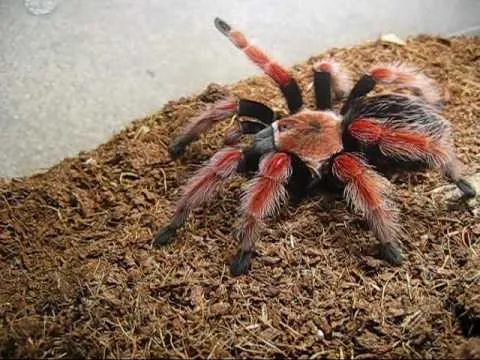What is Overfeeding and Why Is It Bad?
Overfeeding a tarantula is a common but serious mistake among new and experienced keepers alike. It involves providing your tarantula with too much food, too frequently, or offering prey that is too large for the spider to comfortably consume. This practice can lead to a range of health problems, significantly impacting the tarantula’s lifespan and overall well-being. Unlike many pets, tarantulas have a unique metabolism and dietary needs. Overfeeding can lead to obesity, which strains the tarantula’s internal organs and can hinder its ability to molt properly. Molting is a crucial process for tarantulas, as they shed their exoskeleton to grow. Overfeeding can make this process difficult and potentially fatal. Understanding the implications of overfeeding is the first step in ensuring your tarantula thrives in a healthy environment. It’s about more than just providing food; it’s about understanding the spider’s specific needs and providing care that supports its natural behaviors and life cycle.
Understanding Tarantula Metabolism
Tarantulas have a much slower metabolism compared to many other animals, meaning they don’t require frequent feeding. Their ability to conserve energy and survive long periods without food is a key adaptation to their natural environment. This metabolic efficiency is a critical factor in understanding how often and how much to feed your tarantula. Young, growing tarantulas generally require more frequent feeding than adults, but even juveniles don’t need to be fed every day. The spider’s size, age, and species also play a role in determining its specific dietary needs. A well-fed tarantula will have a rounded abdomen, but this should not be mistaken for a sign that more food is needed. Overfeeding can lead to the spider’s abdomen becoming excessively large and distended, a clear sign that it is consuming more than it needs and potentially leading to health issues. Observing your tarantula’s behavior, body condition, and feeding habits is essential to determine its specific metabolic needs and adjust your feeding schedule accordingly.
Mistake 1 Feeding Too Often

One of the most common mistakes in tarantula care is feeding them too often. Tarantulas are ambush predators and are designed to survive for extended periods between meals. Feeding them daily or even every other day is excessive and can lead to overfeeding. A general guideline for juveniles is to feed them 2-3 times a week, and for adults, once a week or even less frequently. The frequency should be adjusted based on the spider’s size, species, and growth rate. Overfeeding can stress the tarantula’s digestive system, leading to health problems. In the wild, tarantulas may go for weeks or months without eating, particularly when preparing to molt or during periods of environmental stress. Replicating this natural feeding pattern as closely as possible is essential for maintaining the spider’s health and well-being. Always observe your tarantula’s behavior; if it consistently refuses food, it may be a sign that you are feeding too often or that the spider is preparing to molt.
Consequences of Frequent Feeding
Feeding your tarantula too frequently can have several negative consequences. Obesity is a major concern, leading to reduced mobility and difficulty molting. Overfed tarantulas may struggle to flip over during molting, leading to a failed molt and possibly death. The spider’s internal organs can be strained, shortening its lifespan. A bloated abdomen can also make the tarantula more vulnerable to injury. In addition, a constantly full digestive system can lead to digestive problems, such as constipation or impaction. These issues can be painful and severely impact the spider’s overall health. It’s crucial to monitor your tarantula’s body condition and adjust the feeding schedule accordingly. A healthy tarantula should have a slightly rounded abdomen, but not one that is overly distended. If you notice your spider has a particularly large abdomen, reduce the frequency and amount of food you offer.
Mistake 2 Offering Prey Too Large
Offering prey that is too large is another common mistake that can lead to overfeeding and health problems. Tarantulas are opportunistic feeders, and if given the opportunity, they will sometimes attempt to consume prey that is larger than they can comfortably handle. This can lead to the spider regurgitating the meal, or in severe cases, the prey can injure the tarantula from the inside. The general rule of thumb is to offer prey that is no larger than the tarantula’s abdomen. This allows the spider to easily subdue and digest the meal without undue stress. The size of the prey is especially important for juveniles and smaller tarantulas, which have a more delicate digestive system. Always supervise your tarantula during feeding, especially when offering larger prey items. If the spider struggles to subdue or consume the prey, it may be too large.
Assessing Prey Size for Your Tarantula

To assess the correct prey size, compare the size of the prey item to the tarantula’s abdomen. The prey should not be wider or significantly longer than the spider’s abdomen. For smaller tarantulas or slings (baby tarantulas), it’s crucial to offer smaller prey items like pinhead crickets or fruit flies. As your tarantula grows, you can gradually increase the prey size, but always err on the side of caution. Remember, it’s better to feed a tarantula smaller, more frequent meals than to overwhelm it with a single, overly large prey item. Also, consider the type of prey. Crickets, roaches, and other feeders can be nutritious, but they can also be aggressive. Be sure to remove uneaten prey within 24 hours to prevent the feeder from injuring the tarantula. Regularly evaluate your feeding practices and adjust them based on the tarantula’s growth and behavior to ensure its health and well-being.
Mistake 3 Ignoring Molting Schedules
Molting is a critical process for tarantulas, during which they shed their old exoskeleton to grow. During this time, the tarantula is extremely vulnerable and unable to eat. Attempting to feed a tarantula that is in premolt or during the molting process is a serious mistake. The spider will likely refuse the food, and attempting to eat during molting can be detrimental. Signs that your tarantula is preparing to molt include a darkening of the abdomen, a loss of appetite, and the spider spending more time in its burrow or hiding spot. Molting can be a stressful process, and the tarantula needs to conserve energy and avoid any unnecessary stress. If you see your tarantula has stopped eating or has any of the signs of pre-molt, stop feeding it until it has successfully molted and resumed normal behavior. After molting, wait a few days for the tarantula’s new exoskeleton to harden before offering food. Premature feeding can make the tarantula vulnerable.
The Molting Process and Feeding
The molting process itself is energy-intensive. The tarantula will often prepare by fasting for several weeks. During molting, the spider will lie on its back, and the old exoskeleton will split open. The tarantula will then slowly extract itself, leaving behind its old shell. After molting, the tarantula’s new exoskeleton is soft and vulnerable. It needs time to harden, which typically takes several days to a week depending on the size and species. During this time, it is crucial not to offer food, as the tarantula could injure itself trying to eat before its fangs and body are fully hardened. Once the exoskeleton has hardened, the tarantula will resume its normal feeding habits. Feeding a freshly molted tarantula too soon can lead to injury and potentially a failed molt. Observe your tarantula’s behavior and appearance to ensure it is fully recovered before resuming feeding.
Mistake 4 Overlooking Environmental Factors

Environmental factors such as temperature and humidity can significantly impact a tarantula’s appetite and metabolism. Providing the correct environment is essential for the tarantula’s health and well-being. If the temperature is too low, the tarantula’s metabolism will slow down, and it may refuse food. Similarly, if the humidity is too low, the tarantula may have trouble molting, which can affect its appetite. Maintaining the correct temperature and humidity levels for your tarantula’s specific species is therefore critical. This often involves using a heat source, such as a heat mat or a ceramic heat emitter, and monitoring the temperature with a thermometer. Humidity can be maintained by misting the enclosure with water and providing a water dish. Proper ventilation is also important to prevent the buildup of harmful bacteria and maintain the appropriate humidity levels. Always research the specific environmental requirements of your tarantula species to ensure that you are providing an optimal habitat.
Impact of Temperature and Humidity
Both temperature and humidity play critical roles in a tarantula’s ability to eat, digest food, and molt. Temperature affects the rate of metabolism. Warmer temperatures generally speed up metabolism, which can increase appetite, while colder temperatures slow it down. Therefore, if the temperature is too low, your tarantula may not feel like eating, and offering food can be counterproductive. Humidity is crucial for molting. Low humidity can cause the exoskeleton to become dry and brittle, making it difficult for the tarantula to shed its old skin. High humidity can lead to other problems. Maintaining the correct balance is essential. Regularly monitor the temperature and humidity levels in your tarantula’s enclosure using reliable instruments. Adjusting the temperature and humidity as needed can help ensure that your tarantula is healthy and has a good appetite. In general, tarantulas thrive in a stable environment. Avoid drastic changes in temperature or humidity, and monitor your tarantula’s behavior for signs of stress.
Mistake 5 Not Observing Your Tarantula
The final mistake is not observing your tarantula closely. Tarantulas, like any pet, communicate their needs and well-being through their behavior and appearance. By carefully observing your tarantula, you can quickly identify signs of overfeeding or other health issues. Look for changes in the tarantula’s abdomen size, activity levels, and feeding response. A tarantula that is consistently refusing food may be preparing to molt or may be overfed. A tarantula with a large, distended abdomen may be eating too much. A tarantula that is lethargic or inactive could be ill. Recognizing these signs requires careful observation and a willingness to adjust your care routine as needed. Take the time to learn about your tarantula’s species-specific behaviors, and pay attention to any changes in its routine. Regular observation is crucial to catching potential problems early and ensuring your tarantula’s health and longevity. Understanding the spider’s unique needs can prevent many issues. Every tarantula is an individual, and by paying attention to its specific cues, you can provide the best possible care.
Recognizing Signs of Overfeeding

Several signs can indicate that your tarantula is being overfed. One of the most obvious is a significantly enlarged abdomen. The abdomen should be slightly rounded, but it should not be excessively large or distended. If the abdomen appears to be disproportionately large compared to the cephalothorax (the head and body section), the tarantula is likely overfed. Another sign is a lack of appetite. If your tarantula consistently refuses food, even after you’ve reduced the feeding frequency, it may be overfed, or it may be preparing to molt. A lethargic or inactive tarantula can also be a sign of overfeeding or other health problems. Overfed tarantulas may move less and spend more time in their burrow. Look for any changes in the tarantula’s behavior, such as vomiting or regurgitating food. If the tarantula is repeatedly regurgitating its meals, it could be a sign of overfeeding or another underlying health issue. Paying attention to these signs and adjusting your feeding schedule accordingly is essential for maintaining your tarantula’s health and well-being. Early detection of issues can prevent more serious health problems.
Preventing Overfeeding
Preventing overfeeding starts with understanding the tarantula’s specific dietary needs and providing appropriate care. First, determine the species of your tarantula, research its specific feeding requirements. This includes how often to feed and what size of prey to offer. A good starting point is to feed juveniles 2-3 times a week and adults once a week or less, but this may vary depending on the species. Second, always offer appropriately sized prey. As a general rule, the prey should not be larger than the tarantula’s abdomen. Regularly monitor your tarantula’s body condition. If the abdomen appears excessively large, reduce the feeding frequency or the size of the prey. Regularly inspect your tarantula’s enclosure for uneaten prey. Remove any uneaten prey within 24 hours to prevent the feeder from bothering the tarantula or stressing the spider. Also, ensure that the environmental conditions in the enclosure are optimal for the species. This includes maintaining the correct temperature and humidity levels. If your tarantula is in pre-molt, stop feeding until after it has molted. Patience and consistency are key to prevent overfeeding.
Creating a Feeding Schedule
Creating a consistent feeding schedule will help you to avoid overfeeding your tarantula. A good approach is to start with the general guidelines for juveniles and adults. For example, feed juveniles every 2-3 days, and adults once per week. Keep a feeding journal. Recording when and what you feed your tarantula, as well as any observations about its behavior, is highly beneficial. This will help you track your tarantula’s feeding habits and identify any patterns or changes. Adjust the schedule based on your observations. If your tarantula is consistently refusing food or has a large abdomen, decrease the feeding frequency or reduce the prey size. If your tarantula is an active eater and appears to be growing well, you can gradually increase the frequency or size of the prey. Always be patient and consistent. Stick to the schedule as closely as possible, but be prepared to make adjustments as needed based on your tarantula’s individual needs. Never force-feed your tarantula. If your tarantula refuses food, do not try to force it to eat. This can cause stress and potentially lead to injury. Remember, underfeeding is always preferable to overfeeding. If you are unsure how often to feed your tarantula, it is always best to err on the side of caution and feed it less frequently. This will help to ensure that your tarantula remains healthy and lives a long and fulfilling life.
